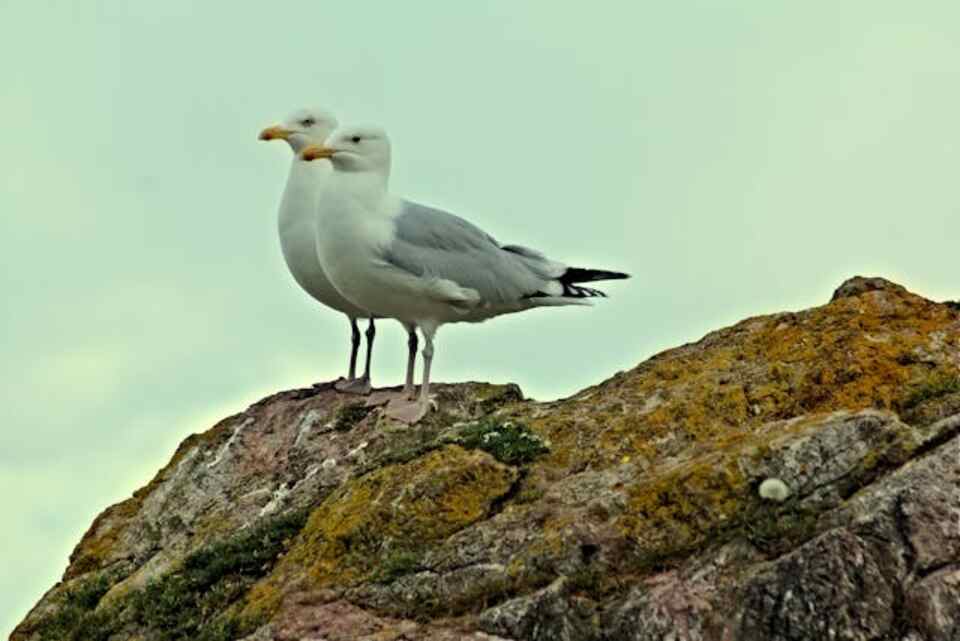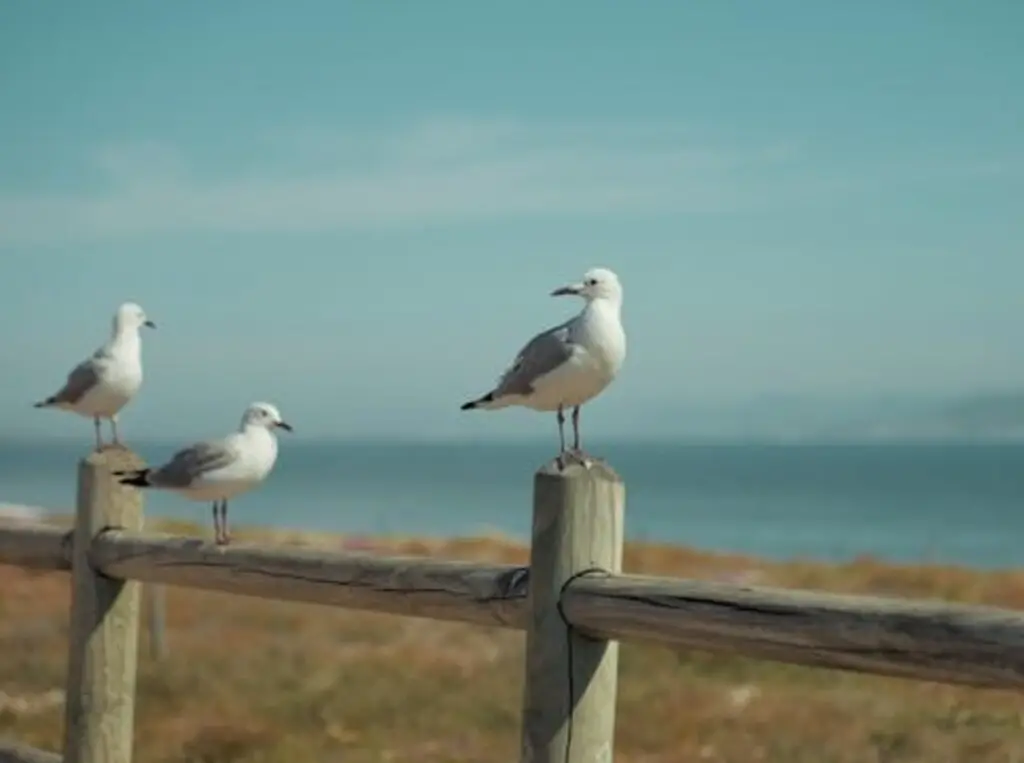Seagulls, known for their distinctive cries and graceful flight patterns, are fascinating creatures that populate coastlines around the world. Have you ever wondered where these seabirds sleep when the sun sets? Understanding the nesting habits and nocturnal behavior of seagulls can provide valuable insights into their lifestyle and habitat preferences.
Table of Contents
Where Do Seagulls Sleep?
Seagull Nesting Habits
Seagulls are resourceful birds when it comes to finding a place to build their nests. They typically nest in colonies, preferring areas that provide easy access to food sources such as fish, insects, and scavenged scraps. Seagulls often choose elevated locations like cliffs, rooftops, or trees to build their nests, offering them protection from predators and high vantage points to survey their surroundings.
Nest Construction
Seagulls are skilled builders, using a variety of materials to construct their nests. They may use twigs, grass, seaweed, and even human-made items like plastic and rope. These materials are carefully arranged to form a secure foundation for their eggs and provide insulation against the elements. Seagulls show a preference for nesting in areas with minimal disturbance, allowing them to raise their young in peace.
Nocturnal Behavior
While seagulls are primarily diurnal, meaning they are active during the day, they also exhibit some nocturnal behavior, especially during the breeding season. Seagulls may engage in activities such as preening, vocalizing, and guarding their nesting sites during the night. However, they do not sleep in the traditional sense; instead, seagulls experience short periods of rest throughout the night while remaining alert to their surroundings.
Where Do Seagulls Sleep?
Seagulls do not have a specific sleeping area like nocturnal animals. Instead, they engage in unihemispheric slow-wave sleep, a fascinating adaptation that allows one hemisphere of their brain to rest while the other remains alert for potential threats. Seagulls may perch on a rock, buoy, or rooftop during these resting periods, maintaining a level of awareness that helps them avoid predators and other dangers.
Urban Habitats
In recent years, seagulls have adapted to urban environments, taking advantage of food sources provided by humans in coastal cities. As a result, seagulls can often be seen perching on buildings, streetlights, and other structures in urban areas. These man-made structures offer seagulls a safe haven to rest and roost, demonstrating their ability to thrive in diverse habitats.
Conservation Efforts
While seagulls are considered common birds in many coastal regions, some species face threats from habitat loss, pollution, and human disturbances. Conservation efforts focused on protecting seagull nesting sites and reducing human-wildlife conflicts can help ensure the long-term survival of these charismatic seabirds.
Understanding where seagulls sleep sheds light on their unique nesting habits and nocturnal behavior. By appreciating these aspects of seagull ecology, we can develop a deeper respect for these resilient birds and work towards their conservation and coexistence in our shared habitats.

Impact of Human Activities on Seagull Sleeping Patterns & Habitats
Seagulls, with their graceful flight and distinctive calls, are a common sight along coastlines worldwide. These seabirds play a crucial role in the ecosystem, and their sleeping patterns and habitats can be greatly affected by human activities. Understanding the impact of human actions on seagull habitats is essential for conservation efforts and maintaining ecological balance.
Human Encroachment on Seagull Habitats
Human encroachment on coastal areas has led to significant changes in seagulls’ habitats. The development of beaches, ports, and harbors has reduced the available nesting and roosting sites for seagulls. As a result, seagulls have been forced to adapt to urban environments, where artificial structures like buildings and bridges mimic their natural cliff habitats.
Pollution and Its Effects on Seagull Sleeping Patterns
Pollution from human activities, such as oil spills and plastic waste, poses a severe threat to seagulls. These pollutants not only contaminate the water and food sources of seagulls but also disrupt their sleeping patterns. Oil spills can coat the feathers of seagulls, reducing their insulation capabilities and making them more vulnerable to environmental changes. Plastic waste ingested by seagulls can cause digestive issues and even death.
Noise Pollution and Disturbance to Seagull Roosting Sites
Seagulls are sensitive to noise disturbances, especially during their sleeping hours. Human activities such as construction work, traffic noise, and coastal developments can disrupt seagulls’ sleeping patterns and roosting behaviors. Constant exposure to loud noises can lead to stress and decreased reproductive success among seagull populations.
Artificial Lighting and Its Impact on Seagull Sleeping Behavior
Artificial lighting along coastlines can have detrimental effects on seagull sleeping behavior. Seagulls are diurnal birds, meaning they are active during the day and rest at night. Artificial lights, particularly bright and direct ones, can disorient seagulls and interfere with their natural circadian rhythms. This disruption can affect their ability to rest properly and may lead to long-term health issues.
Conservation Efforts to Protect Seagull Habitats
Conservation efforts aimed at protecting seagull habitats are crucial for the long-term survival of these seabirds. Creating designated protected areas, implementing regulations to reduce pollution, and raising awareness about the importance of seagulls in the ecosystem are essential steps to safeguard their habitats. Additionally, promoting responsible tourism and coastal development practices can help minimize the impact of human activities on seagull sleeping patterns and behaviors.
The impact of human activities on seagull sleeping patterns and habitats is significant and requires immediate attention. By understanding the challenges faced by seagulls and taking proactive measures to mitigate these threats, we can ensure a sustainable future for these iconic seabirds.
Conclusion
In understanding where seagulls sleep, we have delved into a comprehensive guide to their nesting habits and nocturnal behavior. Seagulls, known for their adaptability and resilience, exhibit fascinating patterns in choosing their sleep locations. Whether it’s on rocky cliffs, sandy beaches, or man-made structures, seagulls strategically select spots that provide safety and access to food sources. By observing these behaviors, we gain insight into the evolutionary adaptations that have allowed seagulls to thrive in diverse environments around the world.
However, the impact of human activities on seagull sleeping patterns and habitats cannot be overlooked. As coastal development continues to encroach upon seagull territories, these birds face increasing challenges in finding suitable places to rest and raise their young. Pollution, noise disturbances, and habitat destruction all contribute to the disruption of seagull populations, affecting their natural behavior and vital processes like nesting and sleeping.
To mitigate these effects and ensure the conservation of seagull populations, it is crucial for us to promote responsible environmental practices and raise awareness about the importance of preserving natural habitats. By taking steps to reduce pollution, limit disturbances near seagull nesting sites, and support conservation efforts, we can create a more harmonious coexistence between humans and seagulls.
Ultimately, the relationship between where seagulls sleep and the impact of human activities highlights the delicate balance that exists in the natural world. By respecting and protecting the habitats of these fascinating birds, we not only safeguard their survival but also contribute to the overall health and diversity of coastal ecosystems. Let us strive to be stewards of the environment, ensuring that seagulls and other wildlife can continue to find sanctuary in the world we all share.



